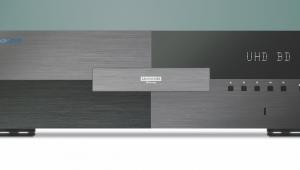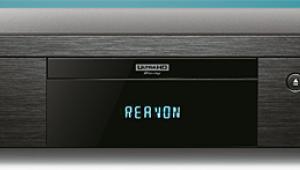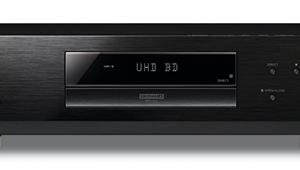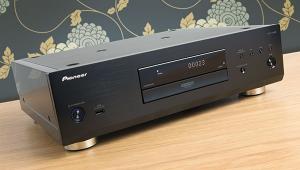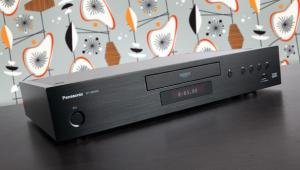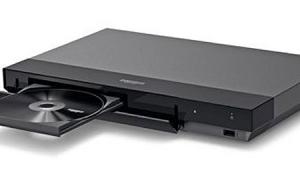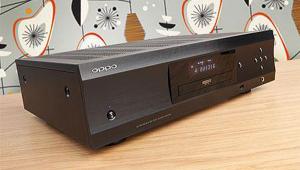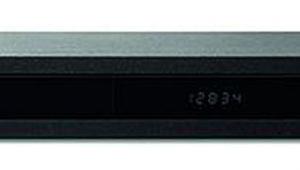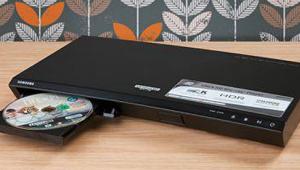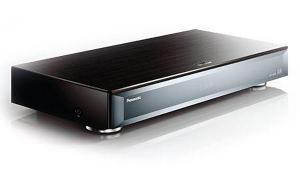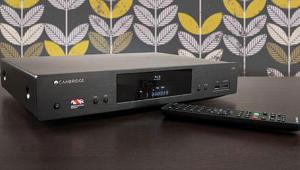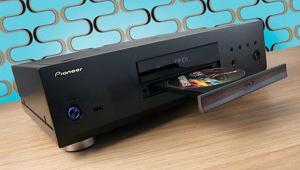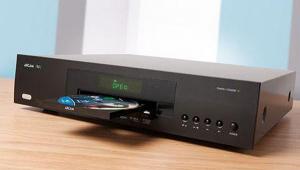Primare BD32 Blu-ray player review
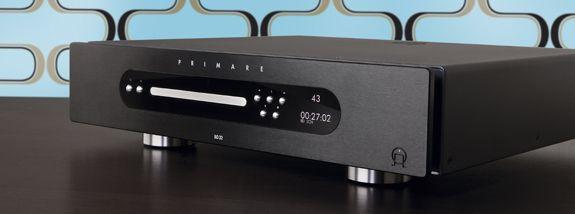
 Here’s the plot: Take one of the finest off-the-shelf BD players available (Oppo’s BDP-93), re-engineer it with custom power supplies, upgraded DACs, dedicated high-end analogue output stages for music playback and then add a much prettier user interface.Take said components, wrap them up in a high-end chassis with stunning build quality and drop dead gorgeous cosmetics.
Here’s the plot: Take one of the finest off-the-shelf BD players available (Oppo’s BDP-93), re-engineer it with custom power supplies, upgraded DACs, dedicated high-end analogue output stages for music playback and then add a much prettier user interface.Take said components, wrap them up in a high-end chassis with stunning build quality and drop dead gorgeous cosmetics.
What you then end up with is the £3,500 Primare BD32 universal player.
Of course, Cambridge Audio did something similar with the 751BD, and you can snaffle one of those for less than £1,000. And in my opinion, if you want the best performing universal disc-spinner on the market and change from a grand, then the 751BD is the obvious choice. That’s why I bought one myself.
This has allowed me to do a very good A/B comparison between the Cambridge Audio and the Primare – and I am saving up for a Primare, no question.
Extensive tweaksPrimare’s tweaking and upgrading is as extensive as it is meticulous. The original Oppo switch mode power supply is only used for standby and new dedicated linear supplies are fired up to power digital and analogue circuits when in use. All of the muting and switching circuits are relay-controlled, so every flick of a switch or skip forward in chapters is accompanied by the clicking of relays. The analogue stages have a large capacitor bank to deliver high current on demand and the whole chassis is heavy-gauge steel to aid cooling.
The stereo output circuitry – for CD and SACD playback – uses the flagship Crystal DSD DAC CS4398 chipset in conjunction with Primare’s fully-balanced output stage. This feeds phono outputs or fully-balanced XLR connections that promise a vanishingly low noise floor. For those with a high-end DAC already in the kit-rack, the PCM signal from CD or streamed music can be fed out via S/PDIF or top-spec AES/EBU digital connection over XLR. The SACD circuit has its own fully dedicated signal path to further nail its audiophile credentials.
While much of the circuit upgrades concentrate on giving BD32 true high-end audio abilities, even the video board gets a Swedish massage. This now benefits from its own ultra-low-noise linear power supply and improved grounding.
The rest of the features and connectivity are essentially that of the superbly specified Oppo, including 3D playback, dual v1.4 HDMI ports, networking via Ethernet or a supplied Wi-Fi dongle, USB inputs, an e-SATA port and a host of installer features. The home screen gives you access to your uPnP servers for streaming audio, video and pictures, YouTube and Picasa access and a tantalizing glimpse of US-only services such as Pandora, Blockbuster and VuDu HD – whatever the hell that is...
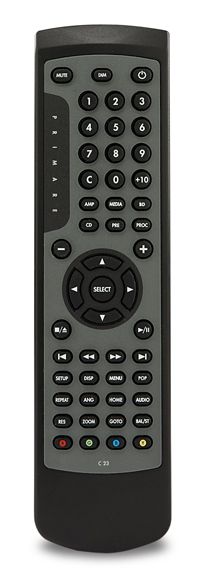 Colour of money
Colour of money
With all that technology on the inside, the first thing you will actually notice about the BD32 is its sumptuous good looks in either black or titanium. Sat next to the plain-Jane 751BD on my rack the BD32 is a sultry sex symbol. It looks and feels superb, the buttons clunk satisfyingly, and the fascia display is the best I have seen on any AV electronics, period. Not only is it deliciously vivid but can also change it to pretty much any colour you like using individual RGB settings.
The GUI too is equally lush, being rich, colourful, logical and an absolute joy to use. There is none of the 751BD’s reticence or often ‘thinking about it’ pauses and the overall design makes the Oppo’s GUI front-end look very dated. The back end set-up screens are ported straight from the Oppo GUI, however.
What lets this player’s value proposition down hard is the really dull remote control. It is a basic bit of plastic with all the relevant buttons and about as inspirational as a cold rice pudding. On a £3,500 player I want a remote control hewn from aluminium with buttons that clunk like the airlock on a spaceship. The Cambridge Audio 751BD’s metal-topped device is far nicer than the Primare effort and, as there is no App control in sight, you can’t switch to smartphone or tablet control either.
Vivid imagesEven without getting embroiled in the video processor’s extensive user controls, the BD32 fires out a vivid and lifelike picture with very clean shading and great detail. The Marvell Kyoto-G2 video processor driving the primary HDMI 1 output port is quite a revelation if you have not seen it in action – and more than half the reason the Oppo system is so well regarded.
Source Code (BD) uses a stark and saturated look during the scenes on the train to emphasize the alternate reality and the BD32 delivers it with panache. The chaotic train explosion is richly detailed and colourful, with no noticeable jarring through the swiftly moving scenes that often upset even the best of the rest. Lost within the eye-searing visual splendour of Despicable Me in 3D, the BD32 provides the sort of entertainment levels that most commercial cinemas would be proud of.
The video output is at the top of the game but is it an upgrade over the Oppo original or 751BD? If it is, it is subtle. There is perhaps slightly less blocking on smooth graduations when the screen is busy.
The same is true of multichannel bitstream output over HDMI. It is top-notch; crisp, clean and free of any of the hash that can fatigue the listener during a long movie. The explosive Source Code train crash, which you can hear over and over again in the movie with different sound effects every time, is fabulously detailed and dynamic, allowing you to go neighbour-annoying loud with gay abandon. The bitstream output is clearly very accurate and offers incredibly low jitter with a wide range of receivers and processors, getting very close to systems that use proprietary clock-sync connections. That is precisely why I bought a 751BD, so does the BD32 add a great deal to its performance here? Honestly, not a lot.
No. Where the Primare really trumps its (admittedly less expensive) rivals is with its musicality. Hook up those phono stereo outputs or, even better, the balanced XLR connections and the BD32 takes on a life of its own. Close your eyes and this player presents music with the sort of articulation and purity afforded by only the very best esoteric CD playback equipment. It is an utterly addictive experience, causing you to begin an endless romp through your CD collection to see just how this guitar solo sounds or how well that bassline rumbles. The sound is refined and polished but lacks nothing in punch and pace when fed rock, pop and dance music. If you have a few SACDs, then go for the stereo option and revel in truly class-leading playback. It’s stunning and in a different league to both the Cambridge Audio and Oppo decks.
Dream streamerYou can leverage this performance with network audio. If you have ripped a library in a lossless format or have high-res recordings up to 24bit/192kHz recordings, the Primare BD32 wants to spin ‘em. There is an openness and tangible reality to recordings that will leave you breathless and your ears loving you forever. Okay, the music access interface is offers just simplistic file-menus with album art to one side, and annoyingly there is no bit-rate display, but there is no arguing with the fact that this is one of the best-sounding streaming devices on the market today.
Not bad for a highly accomplished 3D Blu-ray player with true audiophile-quality CD playback, too!
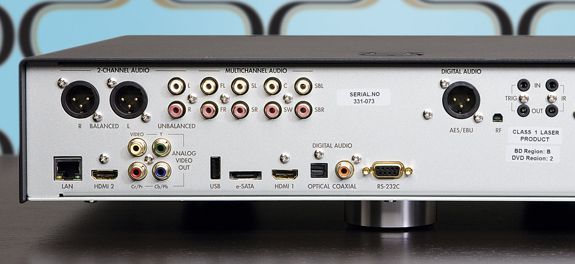
HCC VERDICT
Primare BD32
Price: £3,500 Approx
Highs: Beautiful build; stunning picture and sound; audiophile music playback; slick interface
Lows: Naff remote control; no bit-rate display; price tag
Performance: 5/5
Design: 5/5
Features: 5/5
Overall: 5/5
Analysis
GUI: Primare’s menus benefit from lush graphics and are very responsive
Power consumption: For a BD deck the BD32 is quite power-hungry – we measured an average of 53W when spinning a disc, and 43W just ticking over
Killer feature: The exquisite stereo music performance is where the BD32 justifies its price point
Specifications
3D: yes
Upscaling: yes to 1080p24
Multiregion: no Region B BD; R2 DVD
HDMI: yes 2 x v1.4 outputs
Component: yes 1 output
Multichannel analogue: yes 7.1 output
Digital audio: yes 1 x coaxial; 1 x optical; 1 x AES/EBU
SACD/DVD-A: yes plays both formats
Dolby True HD/DTS-HD decoding: yes
Dolby True HD/DTS-HD bitstream: yes
Profile 2.0: yes with persistent memory
Dimension: 430(w) x 375 (d) x 106(h)mm
Weight: 8.5kg
Features: Audiophile upgrades to power supplies and analogue output stages; balance XLR stereo output; e-SATA port; USB input; network home page; uPnP server access; RS232 port; Marvell Kyoto-G2 processor; chassis-based heat sinking; user adjustable fascia display colour
 |
Home Cinema Choice #351 is on sale now, featuring: Samsung S95D flagship OLED TV; Ascendo loudspeakers; Pioneer VSA-LX805 AV receiver; UST projector roundup; 2024’s summer movies; Conan 4K; and more
|

